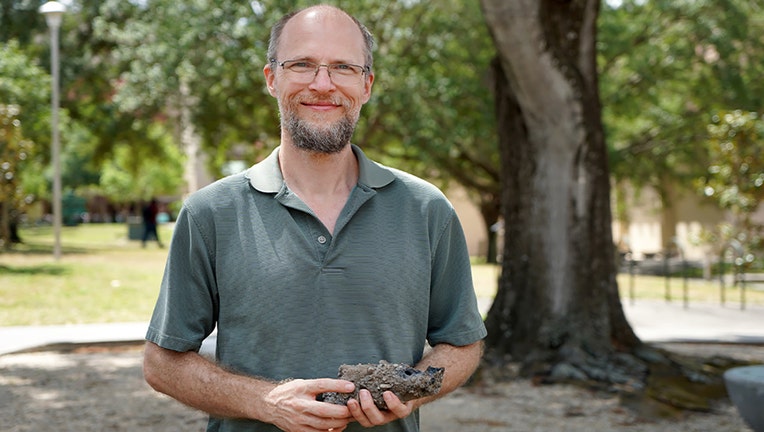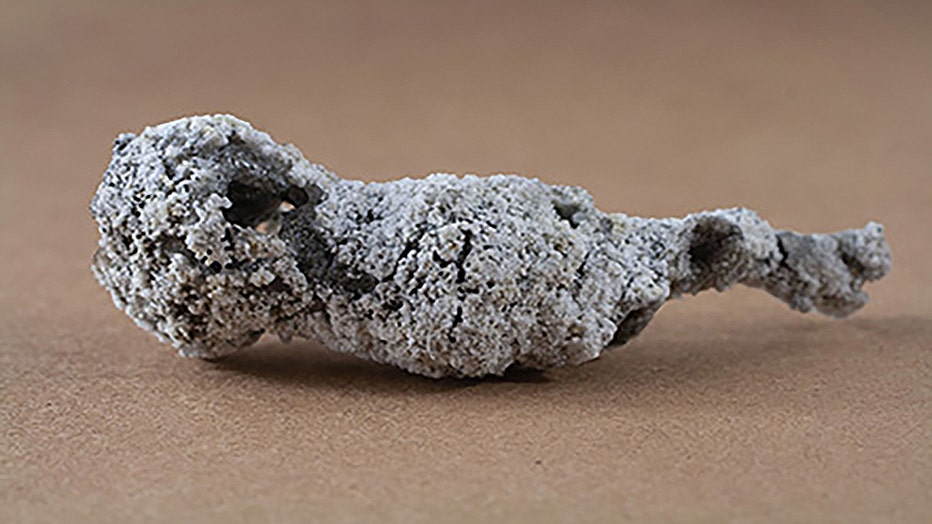See the newly discovered fossilized material left behind by a Florida lightning strike

After lightning struck a tree in a New Port Richey, Florida, neighborhood, a University of South Florida professor discovered the strike led to the formation of a new phosphorus material. Matthew Pasek said it was found in a rock – the first time in
NEW PORT RICHEY, Fla. - A Florida professor says the discovery of fossilized lightning led to the formation of a new material that's never before discovered until now.
In the University of South Florida's news release by Cassidy Delamarter, Delamarter explains that after lightning struck a tree in a New Port Richey, Florida, neighborhood, geoscientist Matthew Pasek found the strike led to the formation of a new phosphorus material in a rock that could represent a member of a new mineral group.
"We have never seen this material occur naturally on Earth – minerals similar to it can be found in meteorites and space, but we've never seen this exact material anywhere," Pasek said.
The University of South Florida professor recently published his study in Communications Earth & Environment. Delamarter explains that the study examines how high-energy events, such as lightning, can cause unique chemical reactions and result in a new material – one that is transitional between space minerals and minerals found on Earth.

Sample of the New Port Richey fulgurite (Matthew Pasek/University of South Florida)
When lightning strikes a tree, the ground typically explodes out, and the surrounding grass dies, forming a scar and sending electric discharge through nearby rock, soil and sand, forming fulgurites, also known as ‘fossilized lightning’," Pasek said.
According to Pasek, when the homeowners discovered the ‘lightning scar,' they found a fulgurite. Assuming it had some value, they decided to sell it to Pasek.
After a collaboration with a professor of mineralogy and crystallography at the University of Florence in Italy, the team set out to investigate the unusual mineral.
"It’s important to understand how much energy lightning has because then we know how much damage a lightning strike can cause on average and how dangerous it is," Pasek said. "Florida is the lightning capital of the world, and lightning safety is important – if lightning is strong enough to melt rock, it can certainly melt people too."
Pasek said the lightning struck the iron accumulation that encrusted the tree roots and combusted the naturally occurring carbon in the tree. The two elements led to a chemical reaction, creating a fulgurite that looked like a metal ‘glob.’
Inside the glob was a colorful and crystal-like matter. It was a material that had never before discovered, Pasek said.
Geologists attempted to remake the material in a lab but were unsuccessful. Experts believe the material likely forms quickly under precise conditions and will turn into the mineral found in meteorites if heated too long.
Per Delamarter, according to Pasek, it’s unlikely this material could be mined for uses similar to other phosphates, such as fertilizer, given the rarity of it occurring naturally. However, it could soon be officially declared a mineral and bring additional awareness to the scientific community.
You can read the full University of South Florida release here as well as Pasek's full study available here.

